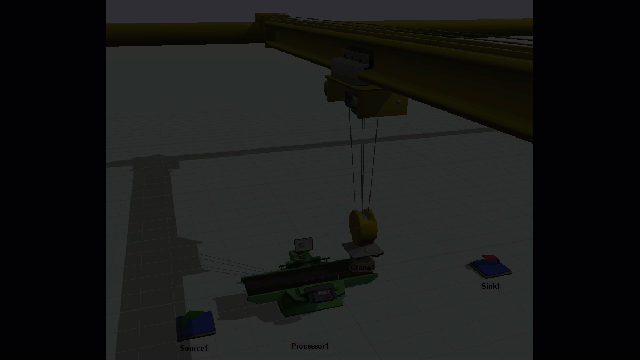Is there a way to change where the pick up point for a crane is in relation to the z height of the flow item?
I am using a crane as representation for a custom pick and place machine that picks up loaded pallets and places them in location. What I am running into is that my machine actually picks up from the bottom of the pallet, however the crane in FlowSim is programed to pick up at the top of the Z height of the flow item.
I have used a set location on load trigger to show the pallet in correct location when traveling to unload and load, but the pallet just jumps up into place instead of the crane lowering to the actual point it needs to for a smooth pickup.
I am using process flow to control my load and unload so there is potential to add an extra extra activity to try to make this work visually.
Above is where it picks up the pallet. Where bottom of Z of crane is at the top of Z on flow item.
Below is how I want it to pick up the pallet and I have made it jump to position with set location on load.

